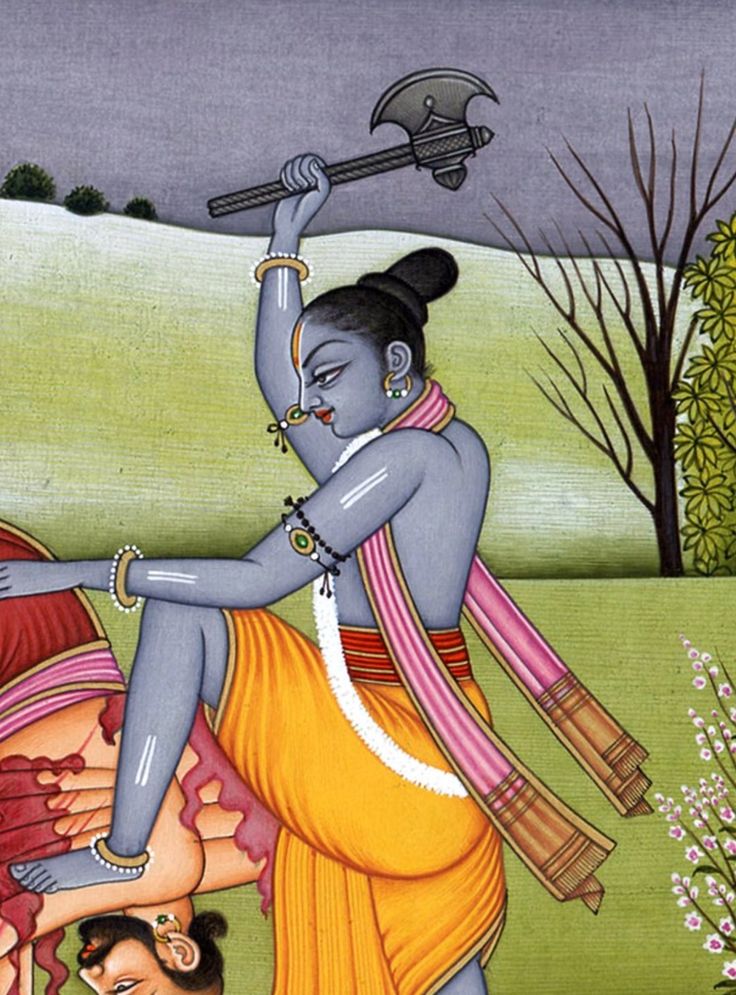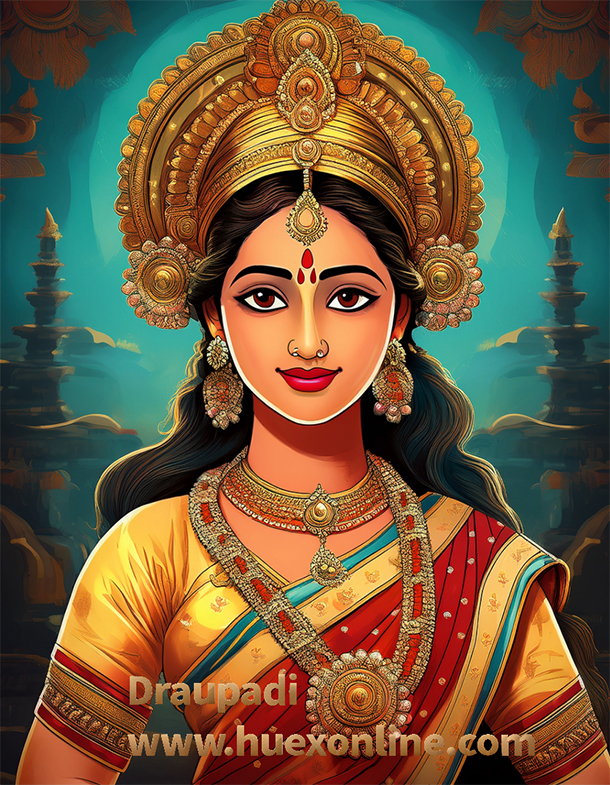Title Thumbnail & Hero Image: The Ancient Sage of Bhārata, developed on Nov.24, 2024.
01.102 Parvasaṃgraha Parva
First revision: Nov.24, 2024
Last change: Oct.27, 2025
Searched, Gathered, Rearranged, Translated, and Compiled by Apirak Kanchanakongkha.
1.
Page 1(21)
This parva (पर्वसंग्रह - Parvasaṃgraha) has 243 ślokas and only one adhyāya (अध्याय) (chapter). It, too, was a later addition. It gives two listings of the Mahābhārata in the eighteen-parva and the 100-parva classifications. There is also a very brief summary of the highlights of the story.
1.
2.
Adhyāya 2
1.
The sages said, 'O son of a Sūta! We wish to hear from you all about the place Samantapañcaka,01 described as it is.'
Sauti said, 'O Brāhmaṇas! As per your wishes, listen to the blessed words about Samantapañcaka as I tell them. For listening to these accounts, you are the best of men. At the juncture of Tretā and Dvāpara,02 angered at sins committed, the greatest of those who ever bore arms, Rāma,03 repeatedly decimated the world of all Kṣatriyas (क्षत्रिय). Having destroyed all Kṣatriyas through his prowess, lustrous like fire, he created five lakes of blood in Samantapañcaka.
---------------
01. Samantapañcaka (समन्तपञ्चक) - A very holy region identified with the area around Kurukṣetra. See detail on Note No.4, page 2 of 01.101 Anukramaṇikā Parva.
02. Two of the four yugas (युग) or eras, the four being Satya Yuga (सत्ययुग) or Kṛta Yuga (कृतयुग), Tretā Yuga (रेतायुग), Dvāpara Yuga (द्वापरयुग), and Kali Yuga (कलियुग).
03. Reference is to Paraśurāma (परशुराम).
1.
2.
Page 2(22)
We have heard that, beyond his senses with anger, he stood in the bloody waters of those lakes and rendered bloody offerings to his ancestors. Then Ṛchīka01 and his other ancestors appeared before this bull among Brāhmaṇas and said, "Calm down, refrain, be pacified." From that day, the region in the neighborhood of those five bloody lakes has become famous as the holy land of Samantapañcaka. The wise men have said that every place should have a name that signifies something that made the place famous. At the end of Dvāpara and the beginning of Kali, a great battle was fought between the armies of the Kurus and the Pāṇḍavas at this holy Samantapañcaka. In that sacred land, free from any bad qualities of the earth, eighteen Akṣauhiṇīs of soldiers eagerly assembled for battle. O Brāhmaṇas! Thus, it was that the region's name came about. I have described to you that beautiful and holy place. O best of Brāhmaṇas! I have told you everything about this place, a region famous in the three worlds.'
 Bhāgavan Paraśurāma killing Kartavitya Arjuna, source: www.pinterest.com, access date: Nov.26, 2024.
Bhāgavan Paraśurāma killing Kartavitya Arjuna, source: www.pinterest.com, access date: Nov.26, 2024.
The sages said, 'O son of a Sūta! We wish to hear everything about the Akṣauhiṇī that you mentioned to us. You know everything. Tell us exactly the size of an Akṣauhiṇī, with foot soldiers, horses, chariots, and elephants.'
Sauti said, 'One chariot, one elephant, five-foot soldiers, and three horses make up a Patti. Three Pattis are known as a Senāmukha, and three Senāmukhas make up a Gulma. Three Gulmas are named a Gaṇa, and three Gaṇas are a Vāhinī. The wise know that three Vāhinīs collectively form a Pṛtanā. Three Pṛtanās make a Camū, three Camūs as an Anīkinī, and the wise say that ten times an Anīkinī is known as an Akṣauhiṇī. O best of Brāhmaṇas! Those who know arithmetic have calculated that there are 21,870 chariots in an Akṣauhiṇī, and the number of elephants is the same. Know that the number of foot soldiers is 109,350, and the number of horses is 65,610. O best of Brāhmaṇas! I have described in detail that those familiar with numbers call an Akṣauhiṇī. O best of Brāhmaṇas! The eighteen akṣauhiṇī of the Kurus and the Pāṇḍavas were made up according to these numbers, and the cause destroyed them all. Time brought them together in this region and destroyed them all, making the Kauravas the cause, destroyed them all.
---------------
01. Ṛchīka (ऋचीक ) - Paraśurāma's paternal grandfather.
 Akṣauhiṇī sena, source: www.quora.com, access date: Oct.19, 2022.
Akṣauhiṇī sena, source: www.quora.com, access date: Oct.19, 2022.1.
2.
Page 3(23)
Bhīṣma, skilled in the best weapons, fought for ten days. Droṇa defended the Kuru army for five days. Karṇa, the decimator of enemy soldiers, fought for two days, Śalya for half a day, and the clubs' duel for that duration. At the end of that day, the son of Droṇa,01 Hārdikya02 and Gautama03 killed Yudhiṣṭhira's soldiers when they were sleeping unsuspectingly. I will tell you in detail the story narrated at the sacrifice of Śaunaka04, the Bhārata story, beginning with the story of Pulomā05, which contains terrific meanings, verses, and accounts and is adorned in many ways. It is accepted by the wise the way men who desire final release accept renunciation, as Ātman06 is among objects to be known and life among dear things. The chief among all histories incorporates the Supreme of intelligence and vowels, consonants and words, vulgate and learned. Hear the outline of different parvas of Bhārata history, with subtle meanings and wondrous lines.
'The first (#1 Ādiparva)01 is called Anukramaṇikā (1);07 the second Parvasaṃgraha (2); then come Pauṣya or Poushya (3), Pulomā or Poulama (4), Āstīka (5) and the descent of the first generation or Adi-vamśvatarana (6); then come the parvas composed by the gods – Sambhavā (7), Jatugṛha Dāha (8),08 Hiḍimba. (9); then Baka Vadha09 (10) and then Chaitraratha (11)02; then the parva known as svayaṃvara03 of the divine Panchali (12);10 then, after defeating rivals in accordance with the dharma of Kṣatriyas (13), Vaivāhika (14),11 Vidūragamana12 and Rājya-lābha (15);13
---------------
01. Aśvatthāmā.
02. Hārdikya (हार्दिक्य) - Name of Kṛtavarman (कृतवर्मन्).
03. Kṛpa (कृप) or Kṛpacārya (कृपाचार्य) - an another name is Gautama (गौतम).
04. Śaunaka (शौनक) - The leader of the great sages in the Naimiṣāraṇya (नैमिषारण्य).
05. Pulomā or Poulama (पुलोमा) - Wife of Sage Bhṛgu (भृगु), One of the Saptarshis (सप्तर्षि), the great seven sages.
06. Ātman (आत्मन् - Self) - The supreme soul, the Brahman (ब्रह्मन् - The Supreme Being) or the Paramātman (परमात्मन् - The Supreme Spirit).
07. These numbers are not part of the text. They have been added to give the reader a better sense of the one hundred books.
08. The burning of the house of lac. Jatugṛha (जतुगृह)
09. The killing of Baka.
10. Droupadi or Draupadī.
11. The wedding.
12. The arrival of Vidūra.
13. Winning of the kingdom.
Notes and narratives
01. Ādiparva (आदिपर्व)
02. Chaitraratha or Caitraratha (चैत्ररथ) or Citraratha (चित्ररथ).
03. Draupadī-svayaṃvara (द्रौपदी-स्वयंवर).
1.
2.
Page 4 (24)
then Arjuna Vanavāsa (16),01 Subhadrā Haraṇa (17)02 and Haraṇa Harika (18); then Khāṇḍavadāha (19),03 where Maya is met; after that, it is known as (#2 Sabhāparva)01 Sabhā Parva (20)04 and after that, Mantra Parva (21);05 then Jarāsandha Vadha (22)06 and Digvijaya (23)07 and after that comes the parva known as Rājasūya(24);08 then Arghābhiharaṇa (25),09 Śiśupālavadha(26)10 and then Dyūta (27);11 and then known as the Anudyūta (28);12 then the parva (#3 Āraṇyaka)02 known as Āraṇyaka (29)13 and Kirmira Vadha (30);14 then the parva known as Kairāta (31), which features the bout between Īśvara15 and Arjuna; then the parva known as Indralokābhigamana or Indraloka Abhigamana (32);16 then the wise king of Kuru’s pilgrimage in Tīrthayātrā (33); then Jaṭāsuravadhaḥ (34)17 and Yakṣa Yuddha (35);18 and the one after that is known as Ājagara (36);19 then the parva known as Mārkaṇḍeya-samasyā (37);20 and then the parva that has the dialogue between Draupadī and Satyabhāmā (38)03; then the parvas known as Ghoṣayātrā (39),21 Mṛga-svapna-bhaya (40)22 and after that the story known as the measurement of rice (41);04.
---------------
01. Arjuna’s sojourn in the forest.
02. The abduction of Subhadrā.
03. The burning Khāṇḍava (खाण्डव) forest. - Khāṇḍava is the Name of a forest in Kurukṣetra, sacred to Indra, and burnt by Agni with the assistance of Arjuna and Kṛṣṇa
04. Assembly hall.
05. When the council meets.
06. The killing of Jarāsandha (जरासन्ध).
07. Conquest.
08. Royal sacrifice.
09. Offerings or gifts.
10. The slaying of Śiśupāla.
11. The game of dice.
12. The sequel to the game of dice.
13. Characterizing the forest.
14. The slaying of Kirmira.
15. Śiva, Īśvara (ईश्वर).
16. Kairāta.
17. The killing of Jaṭāsura.
18. War of the Yakṣas.
19. Boa constrictor.
20. Named after a sage known as Mārkaṇḍeya.
21. Travel with the cattle.
22. Dream of the deer.
Notes and narratives
01. Sabhāparva (सभापर्व)
02. Āraṇyaka (आरण्यक).
03. Draupadī-Satyabhāmā-Saṃvāda (द्रौपदी-सत्यभामा-संवाद).
04. Vrīhi-droṇikā (व्रीहि-द्रोणिका).
1.
2.
Page 5 (25)

Draupadī (द्रौपदी), developed on Oct.12, 20251.
then Draupadīharaṇa (42)01 by Saindhava02,01 from the forest; then comes the parva known as Kuṇḍalahāraṇa (43),03 then Āraṇeya (44);04 and after that the parva known as (#4 Virāṭa). Virāṭa (45);05 then the parva known as Kīcakavadha (46);06 the parva known as Go-Grahaṇa (47);07 then the parva that tells of the wedding between Abhimanyu and the daughter of the king of Virāṭa or Vaivāhika (48); the next parva is known as (#5 Udyōga). Udyōga (49)08, and after that the parva is known as Sanjaya-yāna (50);09 the next parva, concerning the worries of Dhṛtarāṣṭra, is known as Prajāgara (51);10 then Sanatsujāta Parva (52) with secret spiritual philosophy; then Yan-sandhi (53)11 and the arrival of Bhagavat-yāna (54);12 then it is known comes the quarrel of the great Karṇa or Karṇa-up nivada (55) and Niryanana Parva or Abhiniryāna (56),13 where the Kuru and Pāṇḍava armies march to battle; then comes the parva that describes the numbers of warriors and chariots or Bhīṣma-abhiṣecana (57), and the arrival of the intolerance-inspiring messenger Ulūka or Ulūka-yāna (58); then the parva that tells the story of Ambassador or Ratha-atiratha-Saṃkhyā (59); then the wonder-inspiring parva that tells of the anointment of Bhīṣma or Ambā-upakhyana or Ambopakhyana (60); then comes the parva (#6 Bhīṣma) that describes the creation of Jamba or Jambūkhaṇḍavinirmāṇa (61)14.
---------------
01. The abduction of Draupadī.
02. Jarāsandha or Jarāsaṃdha (जरासन्ध).
03. The theft of the earrings.
04. Araṇī (अरणी) is a wood or stick used for kindling a sacred fire, and this parva is named after that.
05. Virāṭa was the king of the Matsya kingdom, and the Pāṇḍavas lived there in exile.
06. The slaying of Kīcaka.
07. The stealing of cattle.
08. Endeavor.
09. The arrival of Sanjaya or Saṃjaya.
10. Sleeplessness at night.
11. An arrival in search of peace.
12. Kṛṣṇa.
13. Niryanana means departure or exit.
14. One of the seven continents (dvīpa) that surround Mount Meru. Sometimes, the number of continents is also given as eighteen. But seven is more standard. The word dvīpa also means. But here, it has been used in the alternative meaning, a division of the terrestrial world.
Notes and narratives
01. Saindhava (सैन्धव) – The King of the Sindhu country.
1.
2.
References:
01. from. "The Mahabharata 1," Translated by BIBEK DEBROY, ISBN: 978-0-1434-2514-4, Penguin Random House, 2015, Printed in Bhārat.
02. from. "The Mahābhārata," An abridged translation by JOHN D. SMITH, ISBN: 978-0-140-44681-4, PENGUIN BOOKS, 2009, Printed in the United States of America, www.penguin.com.
03. from. "The Mahabharata: Complete 18 volume," Veda Vyasa, Kisari Mohan Ganguli, tr. [1883-1896], Publishing in 2021 by Sanzani Publishing.
04. from. http://www.wisdomlib.org.





